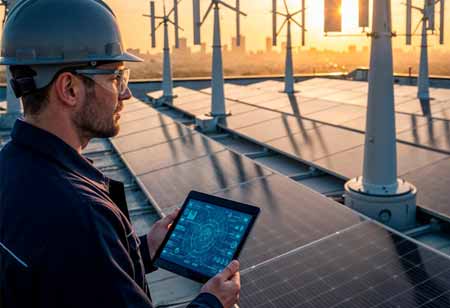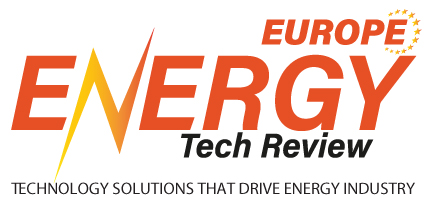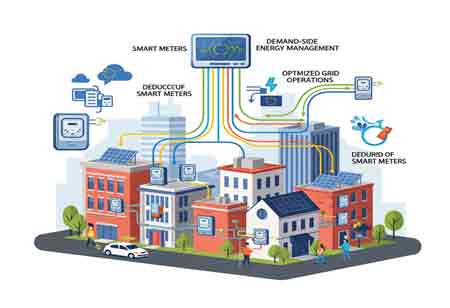CLOSE
Specials
I agree We use cookies on this website to enhance your user experience. By clicking any link on this page you are giving your consent for us to set cookies. More info
Be first to read the latest tech news, Industry Leader's Insights, and CIO interviews of medium and large enterprises exclusively from Energy Tech Review
Thank you for Subscribing
Europe's Smart Grid Era: Turning Renewable Variability into Opportunity
Europe is leading the energy transition with smart grids, which are essential for integrating renewable energy and achieving decarbonization goals by enhancing grid resilience and efficiency.

By
Energy Tech Review | Friday, November 21, 2025
Stay ahead of the industry with exclusive feature stories on the top companies, expert insights and the latest news delivered straight to your inbox. Subscribe today.
Fremont, CA: Europe is at the forefront of the global energy transition, aiming for ambitious decarbonization targets, including a 55 per cent reduction in greenhouse gas emissions by 2030 and net-zero emissions by 2050. Achieving this relies heavily on integrating large amounts of variable renewable energy sources (RES), such as wind and solar power. The traditional, centralised electricity grid—designed for one-way flow from large power plants—is simply inadequate for this new paradigm. This is where Smart Grids, or intelligent power networks, step in as the essential digital backbone for Europe's green energy infrastructure.
The Digital Solution: How Smart Grids Work
Smart grids leverage an integrated network of advanced digital technologies, sensors, and intelligent software to manage electricity generation, transmission, distribution, and consumption in real time. At their core, these systems facilitate a bi-directional flow of both electricity and data, a fundamental departure from the traditional one-way grid model. Smart meters and embedded sensors continuously monitor power flows and consumer usage patterns, generating a constant stream of high-resolution data that informs dynamic operational decisions.
This real-time visibility enables operators to balance supply and demand with far greater precision. Advanced monitoring platforms aggregate vast volumes of data, offering a comprehensive, moment-by-moment overview of grid performance. Utility teams can adjust outputs instantly, better manage fluctuations caused by intermittent renewable sources, and mitigate local congestion or potential system failures. Smart grids are also engineered to seamlessly integrate Distributed Energy Resources (DER) such as rooftop solar installations and community wind projects. Through sophisticated software, the grid accommodates variable energy inputs from prosumer communities, maintaining stability even as decentralised generation grows.
A key feature of smart grid design is automation. Using powerful algorithms, automated systems can detect faults, reroute electricity, and restore power with minimal human intervention. This self-healing capability strengthens resilience, enhances security, and reduces downtime, creating an overall more robust energy infrastructure.
Key Mechanisms for Balancing Supply and Demand
Balancing the variable nature of renewable energy requires a suite of intelligent mechanisms embedded within smart grid operations. Demand Response (DR) programs enable consumers and businesses to actively support load management by adjusting or shifting their energy use during periods of high demand or reduced renewable generation. In response to dynamic price signals or utility notifications, participants may delay energy-intensive activities—such as electric vehicle charging or industrial equipment operation—helping to stabilise the grid during critical periods.
Energy storage plays a central role as well. Battery Energy Storage Systems (BESS), deployed at both utility-scale and distributed levels, capture surplus energy during times of high renewable production and release it when supply drops or demand peaks. Emerging Vehicle-to-Grid (V2G) technologies further expand this capability by allowing electric vehicle batteries to function as decentralised storage assets, reinforcing grid flexibility.
Digital Twins and predictive analytics tools are transforming grid management. By creating virtual replicas of the physical grid, operators can simulate scenarios, forecast demand patterns, and assess the potential of renewable generation with high accuracy. Paired with AI-driven predictive maintenance, these tools allow utilities to anticipate disruptions, optimise resource dispatch, and maintain reliable, efficient operations across the entire energy ecosystem.
Europe is actively supporting smart grid development as a top policy priority. Initiatives like the Connecting Europe Facility (CEF) Energy have funded key cross-border projects in Central Europe, which strengthen electricity grids, boost flexibility, and prepare networks for increased renewables and cross-border power flows. The EU is also focusing on data sovereignty and cybersecurity to protect this increasingly connected and critical infrastructure. The financial commitment is substantial, with the European Investment Bank (EIB) significantly boosting support for energy grids and related supply chains.
For Europe to meet its climate goals and ensure energy independence, the modernisation of its grid infrastructure is non-negotiable. Smart grids, through their foundational digital intelligence and bi-directional capabilities, are the crucial enablers that manage the complexity of intermittent renewable energy, turning the challenge of variability into an opportunity for a more flexible, resilient, and sustainable energy future.

Copyright © 2025 Energy Tech Review. All rights reserved






